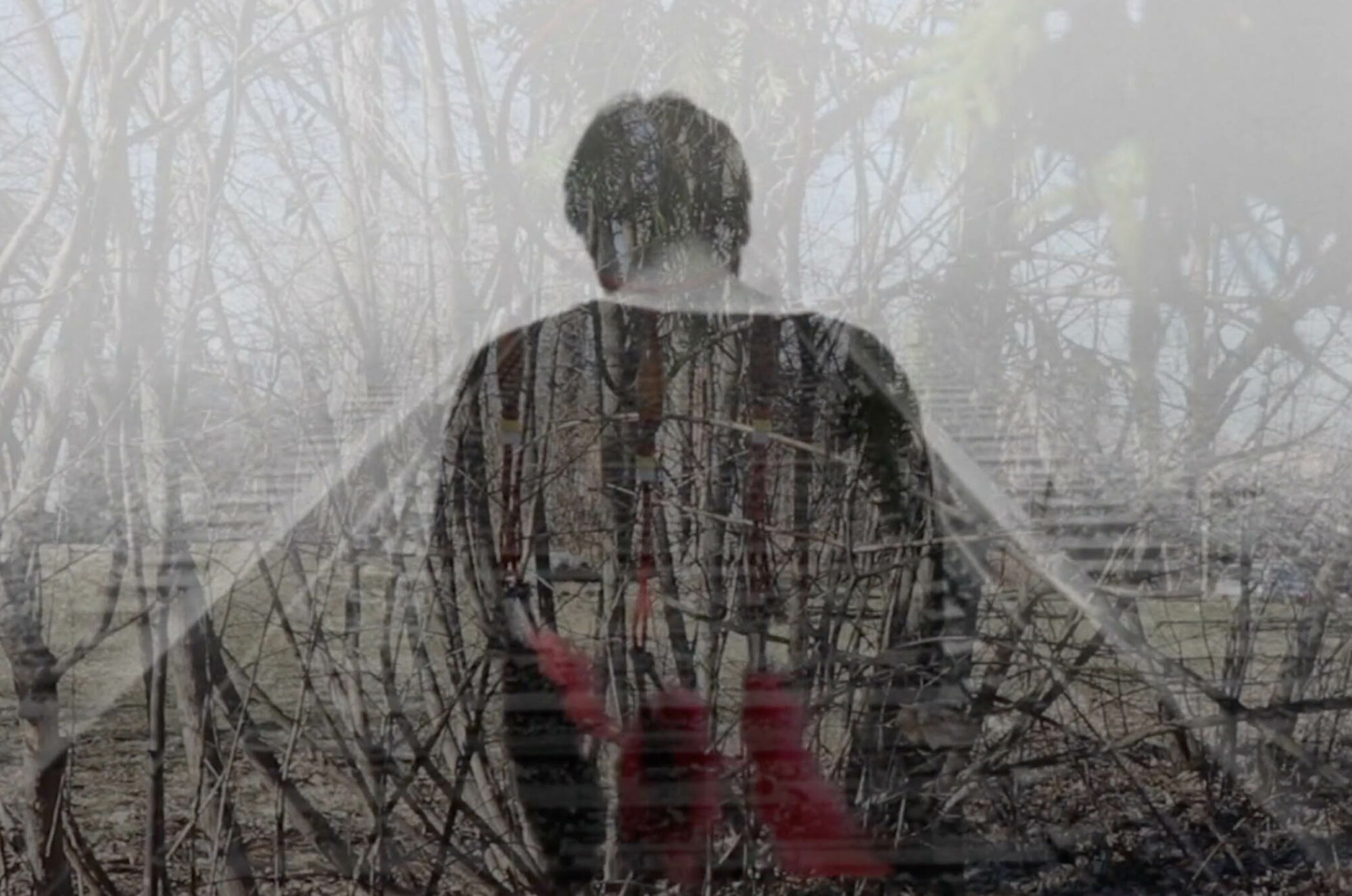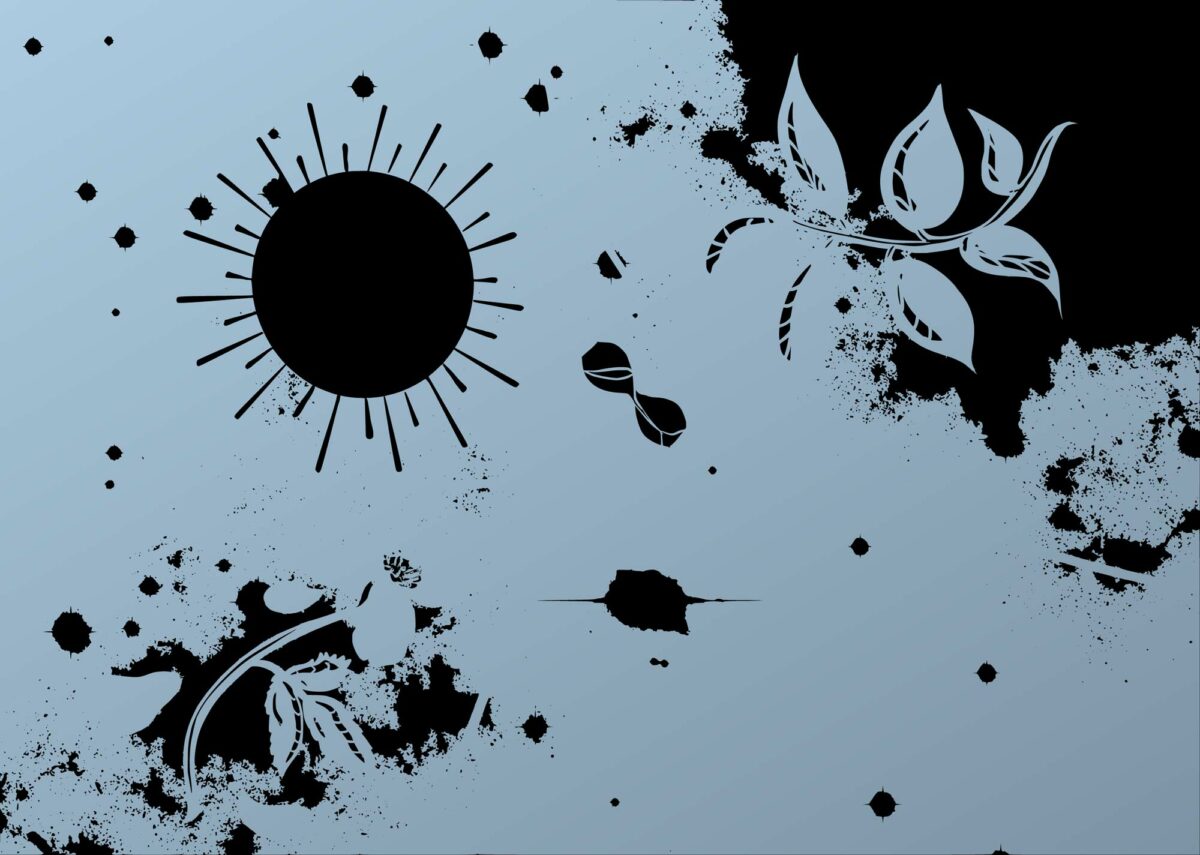When we centre aging, we are learning from and with our Anishnaabekwewag e/Elder partners. Growing old as an Indigenous person within settler colonialism is vital political agency because settler colonial policies have purposely shortened and continue to shorten Indigenous lives.
Early renderings of Indigenous growing old include understanding time and life as cyclical and multiple (in contrast to the linearity, progress, and individualism of “successful aging”), and as connected to land, water, sky, earth, animals, plants, human and non-human relations.
Disruptive Representations and Understandings
For Indigenous peoples, growing old is significant. It is an achievement marking resistance, resilience, and ceremony against the ableist, ageist and racist colonial logics that created institutions and norms intent upon erasing Indigenous people from the land, excluding them from full participation in social, economic and cultural life, and promoting their early death. Anishnaabewewag e/Elders chose to tell and direct stories that speak to their own Indigenous worlds, ways of knowing and being and becoming. Indigenous representations and understandings of aging are inherently disruptive of dominant notions of “successful aging.” They are are their own centred ways of knowing (i.e., epistemology).
Indigenous life centres relations, human and non-human (e.g. water, land, sky, plants, animals), not primarily the individual separated from the non-human. Time is not linear, but cyclical, with cycles of life (Grande, 2018). Against the legacies of white settler colonialism, the Anishnaabekwewag stories are understood as “story medicine” (Anderson, 2011) that hold healing qualities arising from embedded and embodied understandings of aging (Changfoot et al., 2022).

Anishinaabekwe Stories
Video: A Gift from the Land by Alice Olsen Williams (Trout Lake/Curve Lake)
Excerpt from Changfoot et al., 2022, p. 5:
In A Gift from the Land, Alice Olsen Williams (Trout Lake, Curve Lake) describes in fine detail the process of the making of kaaskiiwag (thinly pared smoked moose meat) and her mishoomis iban’s (late grandfather’s) role of making nooka’igan (powdered moose meat). The rhythm of Williams’ voice along with the process of making nooka’igan creates a heightened anticipation to dive into the deliciousness of this traditional Anishinaabe treat. Williams’ video opens us up to understanding life as a cycle, instead of moving forward linearly and progressively; to intergenerational relationships based on reciprocity; and to a nurturance of life across ages and integral with the land. Life continues but never materializes in precisely the same way. For Grande (2018), care does not take place between separate entities. Instead, care occurs in a rich ecological weaving of community that is presenced in Williams’ video, across generations and also across living and spirit realms.
“I wanted more all the time,” Williams says in her story of the nooka’igan and the processes of its making. There is a desire for more of her mishoomis iban, the process of the kaaskiiwag and nookai’gan making, and the community that the process created. All is connected to the land and relationship with the land: the moose hunt, the process of making the kaaskiiwag by thinly paring moose meat to be draped and smoked over the fire, the pounding of the smoked moose meat into a fine powder, the nooka’igan, the gathering of the community into a circle, the passing of the nookai’gan with butter, all of which filled Alice with wanting “more all the time.”
This story of the kaaskiiwag and nookai’gan is a story of community and how it is created through embodied relationships intimate with the land, the moose hunt, and the gathering of families as they watched elders process the moose meat. Williams describes her mishoomis iban who pounded the smoked moose meat into the powder as having a limp or maakimi. There is no word for disability in her Anishinaabe community. A person’s embodiment was and continues to be understood to change through time, and the community adjusted to people’s physical changes; there was a folding-in of these changes into the community. People did not view maakimi or having a limp as lesser than or not being useful. The community perceived everyone as contributing in useful ways. Williams’ mishoomis iban had the role of pounding the moose meat; his maakimi was part of him and part of his contributing.
Williams told the story of kasskiiwag and nookai’gan because she wanted to think of her grandfather, and this memory stood out for her. By reaching back into her childhood, Williams was herself “digging for medicine” (Anderson, 2011). Her story is medicine because of its teachings of the annual traditions of hunting and preparing moose; acceptance of changes a person experiences as they grow old; ways people are folded into the community with a role that was providing, nourishing, and uplifting; and the inseparability between old age, the land, and community in the making of the delicious nookai’gan.”
Reflection Questions
- What thoughts/feelings arise when viewing Williams’ video?
- How is growing old viewed/experienced within Williams’ video?
- Describe aging with/in the land, community and ceremony associated with the nookai’gan.
- What are some comparisons that come to mind when you reflect upon aging in your own context(s)?
Video: Full Circle by Angela Connors (Saugeen)
Excerpt from Changfoot et al., 2022, pp. 4–5:
In her story Full Circle, Angela Connors, executive director of Niijkiwendidaa Anishnaabekwewag Services Circle (Nogojiwanong/Peterborough), opens with the memory of her son remarking, “there are no old people in our family,” which years later Connors realized spoke to the stolen lives of grandparents, aunties, and e/Elders. Refusing to describe her parents as survivors of the Indian Residential School system, Connors, in relating this traumatic legacy, makes clear that Indigenous life was not intended to be long-lived under Canada’s system of Indian Residential “Schools” or outside of it.
The “Schools” were not institutions of education as understood by settlers, but, rather, carceral institutions that played a significant role in Indigenous dispossession, cultural genocide, and settler enrichment (Truth and Reconciliation Commission 2015). Her further experience of feeling and being out of synchronicity with markers of normative aging brings to light the misfitting she encountered. She describes losing her parents, acquiring her first bra, having children at a younger age, and coming full circle as she enters older adulthood, being seen as a younger person. The viewers of her story are brought into her past, the early deaths of her parents shaped by colonial violence, and her maturing life experiences bringing new meaning to this violence, loss and young motherhood.
In Connors’ story, a cyclical experience of time emerges. Returning to the past memory of her parents and their forced attendance at Indian Residential School brings deeper meaning to her son’s observation of there being no old people in the family. There is also refusal of the settler description of Indigenous people having survived beyond the Indian Residential School. In refusing that her parents were survivors, she enacts what Flowers (Leey’qsun, Coast Salish First Nation) refers to as an Indigenous refusal of the settler gaze (2015) and challenges settlers themselves to consider their/our implication in systems of colonial oppression. The healing work that Connors leads with Niijkiwendidaa Anishnaabekwewag Services Circle is also part of the cycle of life: she now actively resists the oppression and racism experienced by her Anishinaabe community, as well as by Indigenous peoples, Black persons and people of colour where she lives.
Reflection Questions
- What thoughts/feelings arise in response to Connors’ video?
- What might be some impacts of being told that one is out of step with markers of normative aging (e.g. heteronormative expectations of having children at a certain age, acquiring material items at or by certain years of age, appearing as one’s age or younger or older, depending upon the norm in question).
- What erasures of experience occur around Indian Residential Schools and similar carceral institutions?
- What kinds of agency push back against the entanglements of ageism and racism?
Cumulative Questions
Having read the text and viewed the stories above, here are some further questions for reflection. These questions can be reflected upon individually or in small groups.
- How does Anishnaabekwe aging feel and sound, and what does it taste like?
- How do the storytellers’ experiences contrast or resonate with your experiences of aging (e.g. your own experiences, or the experiences of relations/family/friends)?
- Thinking of your own identities, what would you like to see change in aging experiences?
A version of an illustration by Naheen Ahmed of plants, an hourglass, and a sun floating on a blue background. This version of the image is blue with black details, which renders some details invisible.






